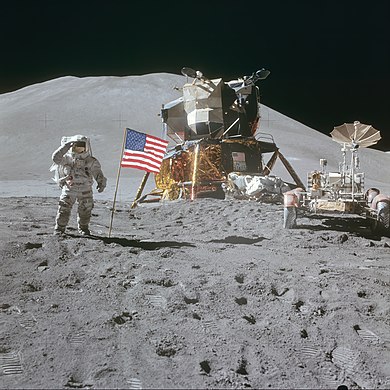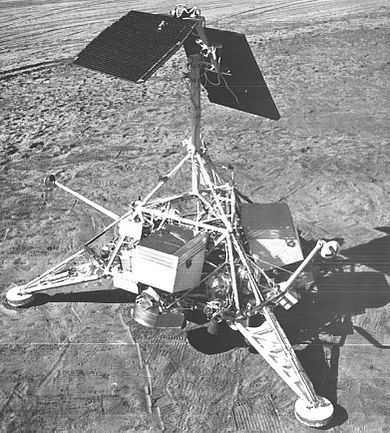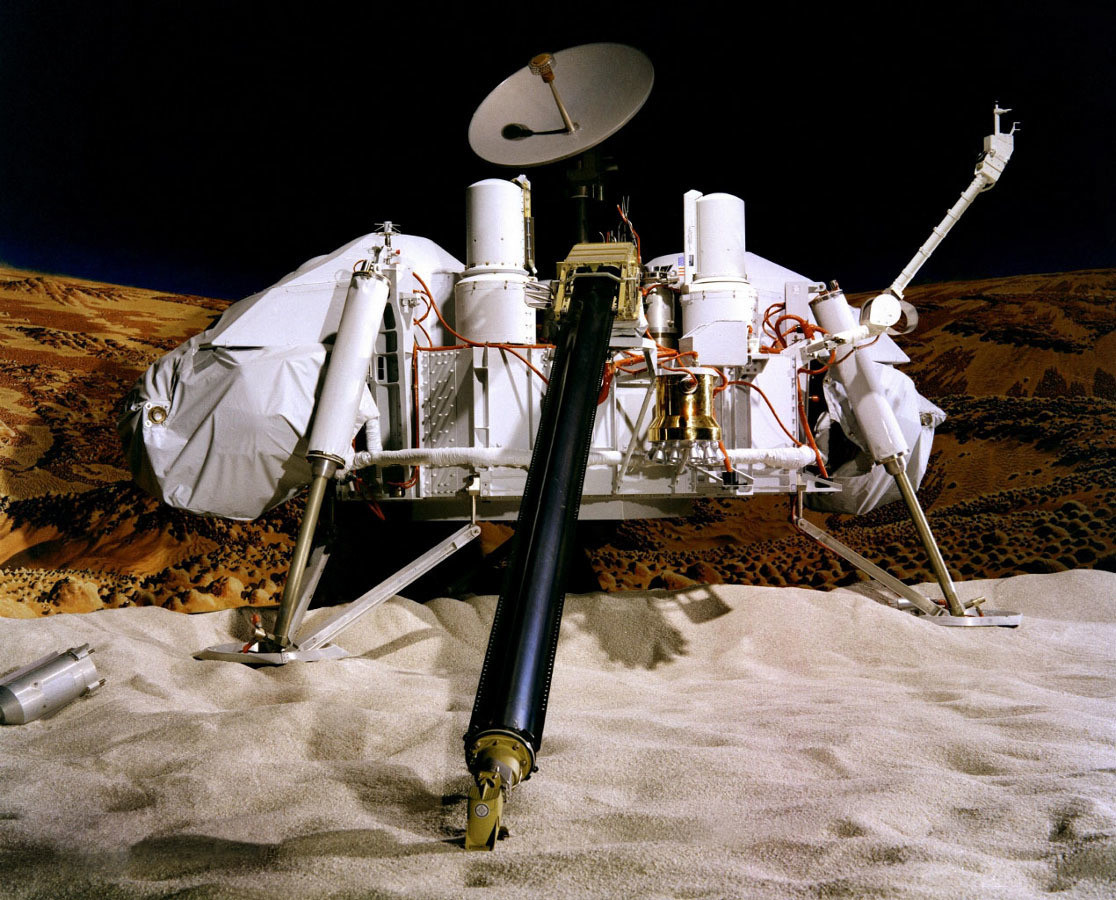At about 04:49 in Scott Manley's January 30, 2022 video Deep Space Radiation, Black Holes And Other Questions - Episode 14 a painting by the science fiction and space artist David A. Hardy is included, which shows an astronaut in a space suite sitting on the surface of Io(?) and painting Jupiter on to a canvas sitting upon an easel.
I found this Vector1 article about the artist: Visions of Space: An Interview with David A. Hardy which includes the image below of a "little green person" inspecting what looks like a lander on Mars, titled "BHEN on Mars (1975)". (See also Amazing Stories' The Art of the IAAA: David A. Hardy – The King of Space Art for more)
The lander has a dish antenna pointed skyward sitting at the end of a multi-jointed articulated arm. This got me wondering about real landers, so I'd like to ask:
Question(s):
- Has there ever been a dish antenna on a lander destined for someplace beyond Earth2?
- If so, which was the first?
- How about a first for rovers?
1"Vector is the critical journal of the British Science Fiction Association, publishing articles and features on science fiction and fantasy around the world."
2"destined" means work should be well underway in the design phase or construction phase at a minimum, but it doesn't have to have been launched yet nor successfully landed.
"BHEN on Mars (1975)" from Vector's Visions of Space: An Interview with David A. Hardy







